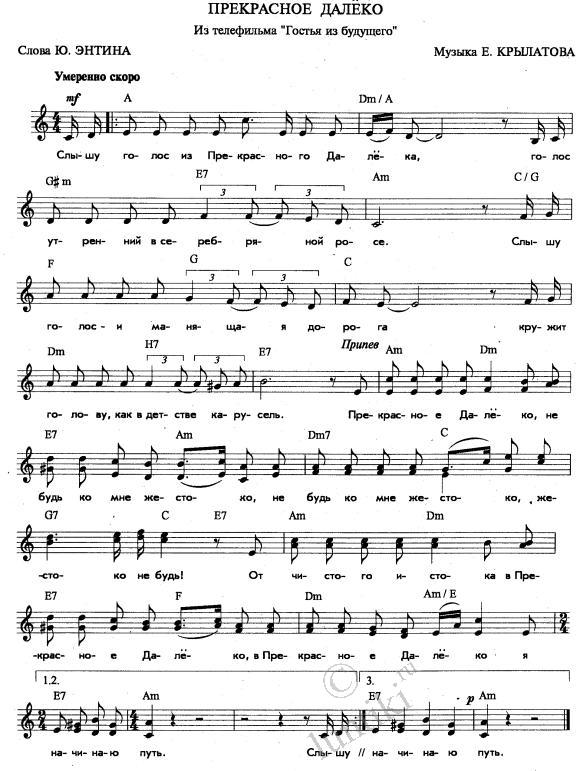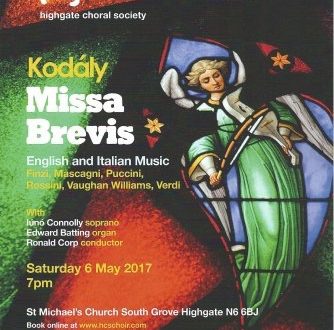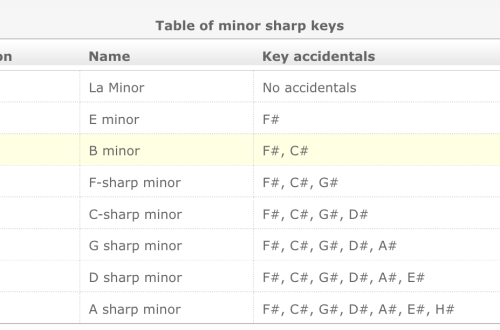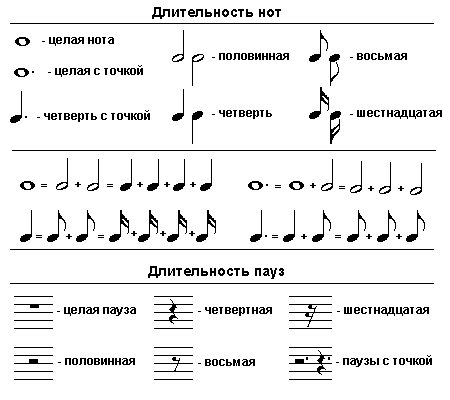
Note durations
Rhythm Basics
Let’s look at how to display the length of the sound in music (how long does each note sound?) , This will help you determine the rhythm of the melody written on paper. Consider first the relative length of a note (sound). We will count out loud: ONE AND TWO AND THREE AND FOUR AND, ONE AND TWO AND THREE AND FOUR AND…
We will express the duration of the note using this score (the letter “I” is also very necessary for us during the count).

So, based on simple math:
- A whole note is the duration when we manage to count: One and Two and Three and Four and (the sound of the note lasts as long as you pronounce what is written in bold, and pronounce each word without pauses at the same speed – monotonously)
- Half (note duration is half as long) – One and Two and
- Quarter or quarter note (even shorter 2 times) – Once and
- Eighth (even shorter by 2 times) – One (or AND , depending on where we ended the count before)
- The sixteenth (even shorter by 2 times) – on the account of “ One ”, two of them have time to pass (or on the account of “ And ”, two notes also have time)
- Whole with a dot , quarter with a dot and other notes with a dot – an increase in duration by exactly one and a half times (for a quarter with a dot ” One and Two “)
Now about absolute speed
After all, you can count One and Two and Three and Four And quickly, but you can oooooochchcheeeeennnn mmmmeeeeedddddllllleeeeennnnoooo. There is a metronome for this – it sets how many quarter durations fit in a minute and this speed in music is indicated by special words in Italian (an example of adagio is rather slow, we will not now give exactly what limits the absolute speed for adagio on a metronome is set to). Instead of adagio , they can write in Russian in music rather slowly
The metronome emits a steady beat at a given frequency and is used to keep you in a steady rhythm – neither speeding up nor slowing down. It measures sounds corresponding to quarters and a speed of 100 beats per minute corresponds to 100 quarters per minute. An electronic metronome can be found on the Internet (just enter in Yandex)
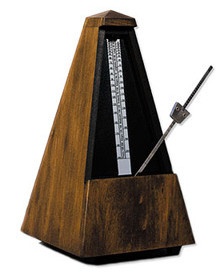
What is “One”, what is “and”?
This is just your even score (“One” and “and” are exactly the same in duration and correspond to the duration of the eighth).
If you see two notes of different heights (in a music book) and an arc connecting them, then you are smoothly moving from one to the other. If these are two absolutely identical notes (of different or the same duration) and there is an arc between them, then simply add their duration and play this long note.
Music is divided into segments – measures. In each measure, the total duration of all notes can be, for example, 4/4 (four quarters) – namely, “one and two and three and four and”, or 3/4 – namely, “one and two and three and” (by the way , this is a dimension for a waltz), 2/4 – “one and two and” and others.
Pauses are the filling of silence between sounds, similarly to notes there are whole, half pauses and so on.
Let’s look at an example. Let us have the first note eighth (count ONCE ), the second note is a quarter (we do not stop counting, therefore we count AND TWO ), then again the eighth (count further AND ), then a quarter pause (count THREE AND ), then the eighth note ( FOUR ), then the eighth pause ( And ). We have completely filled out one measure of 4/4 time signature. This is followed by the same measure 4/4, which we also fill with various notes and rests, but the total will be the same – four quarter notes. Some songs use 3/4 bars, we fill them with One And Two And Three And . Then a new one, the same size.
The very first count of each measure, “One,” is stronger and more accentuated, because it is the first! It is the most stable (if in a simple way, it sounds louder and more confident). Accounts “Two”, “Three”, “Four” are less stable. Between them there are “and” – these are quite unstable accounts, they are played quieter and more modestly. For example, consider the poem:
Storm Mist Sky C ro et . _ _ I have bolded the percussion (sustained sounds – like “One”, “Two”, “Three” and so on. This is a simple analogy for your understanding of the strong and weak beats of the bar.
We are NOT moving our hand to a new chord between measures , because there is not even a millisecond break between the measures – they follow one after another, we rearrange the chord on the last unstable count “and” of each measure (for example , One and Two and Three And – on this score “ and “we must have time to release one chord and rearrange it to another at the time of the next bar)
Next is to give an example of what music looks like recorded in durations. Some flags are directed downwards, others upwards – this is for beauty, so that the flags do not protrude much beyond the stave. ATTENTION – you see 5 stripes and notes on them, these are not strings, this is a musical notation of music – consider this a cipher that needs to be decoded, you can often find music in the form of tablature (they are also called tabs) – there are 6 lines, each corresponds to its own string. It’s like a coordinate grid.
We see at the beginning the size 4/4 (this size can be written simply 4/4 or with an icon similar to the letter C – as in the song about bears from the Caucasian captive). The counting tempo is moderately fast (after all, we can say “one and two and three and four and” very quickly and very slowly – this just refers to the absolute duration of the music – this is about 90 metronome beats per minute).
Now it’s not a problem to find out the speed of the game – we will learn famous melodies and we always have audio or video for comparison (you can download your favorite song from the Internet).
Check out the sheet music for the two songs below. Pay attention to how groups of the same duration are written. For example, in the word “Far”. There, two sixteenths (with two stripes at the top) are combined and look different than in the word “voice”. We also see that two notes can have one common flag above or below – all this is for beauty and better visibility. We also see that the time signature of 4/4 can change to 2/4 over the course of a song, and also that the song begins with an unstable sound (the first bar is small and does not have the beginning of “One and two and three and four”, there is only the last “and”). These are the basics of rhythm, you do not need to go deep into this topic at this stage, it will be continued in musical theory.
Use the metronome to maintain speed.
Practice with the lengths – try tapping the rhythm of the songs below with a pencil (I’m sure it will work, you’ve heard them). If it’s difficult, use a metronome, count yourself “one two three four, one two three four”
Not all musical signs are known to you, do not worry – you will still have time to learn. Find other notes on the Internet (familiar songs) and try to tap them
